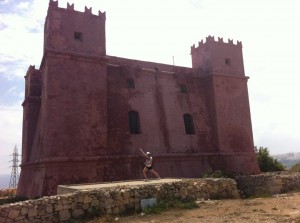Urban planning, where it has succeeded or failed. Two years ago I had the opportunity to fly to Malta and visit every part of the island (its small enough to travel it in 3-5 hours). What intrigued me were two cities: Valleta and Mdina. I was originally going to write my essay on how tourism is what allows these cities to flourish but that traffic is a variable that affected their economies, but there are not enough resources in Canada.
What strikes me is that these two cities thrive on tourism, but one has been modernized and the other appears to be locked in time. When you visit Valetta there is ample parking outside, an intrinsic bus loop, and tourists everywhere. It was built in the 16th century during the rule of the Order of St. John of Jerusalem (these guys built fascinating watch towers all around the island) and is on the ocean with two natural harbors. When doing some research I discovered that the city’s principal designer’s plan deviated from medieval Maltese architecture, which exhibited irregular winding streets and alleys. Instead, he designed the new city on a rectangular grid, and without any collacchio (an area restricted for important buildings). After the Knights’ departure and the brief French occupation, building projects in Valletta resumed under British rule that included widening gates, demolishing and rebuilding structures, widening newer houses over the years, and installing civic projects. The city is always busy and alive, except in the evenings where everyone has gone home and the buses have stopped running (but Malta in general shuts down after 6pm)

In Mdina, the “silent city,” it appears to be a ghost town and everything has been frozen in time like a museum. It’s eerie because nobody travels in this city and you feel almost trapped because of all the high walls. There is a bus loop but it’s far into the island and traffic was never addressed, mostly because there were no automobiles when this city was built. There are no ports nearby, but rather the city exists on higher elevation and can view the coastline as it was originally built as a defensive Roman castle and dates its origins back to 700 BC. It has had sections rebuilt or redesigned, as the Knights of St John altered the cathedral and focused on restoration projects, but the main focus was preservation instead of modifying it to become modernistic. If you visit Mdina bare in mind people are residing within the walls, so be careful you don’t end up in their living room like many mistaken tourists have made (not myself). While Valetta is constantly upgrading, Mdina is being preserved.

Essentially I just find it intriguing how these two cities are still functioning in this modern age. They both rely on tourism and contain residents dwelling within these archaic and Baroque stylized buildings but their locations are strategic to their flow of traffic. Although Mdina used to be Malta’s capital, it is clear why they transferred it to Valetta because of the strategic location. No longer is defense a concern like Max Weber described, but instead the city focuses on furthering its economic interests.


